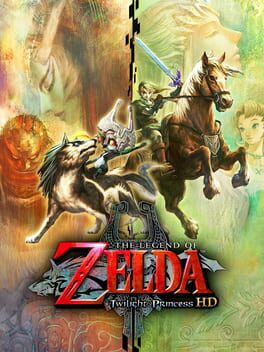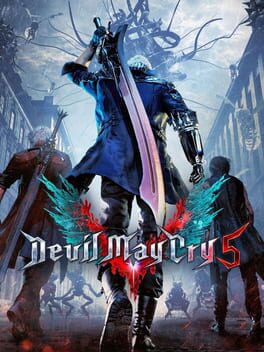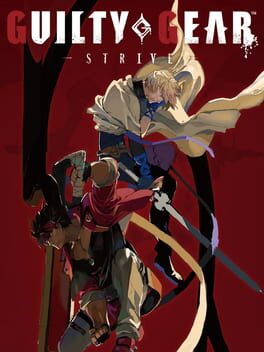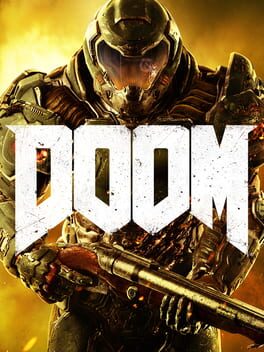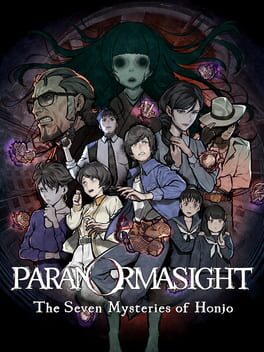I wanna play as wide a variety of video games as I can. I love games and I love sharing my experience with them as well as reading the experience of others.
I tend to really enjoy the games I play, and also avoid games that are known for being bad.
Reviews are usually spoiler free, unless they're for narrative heavy games like visual novels or adventure games.
Badges

Treasured
Gained 750+ total review likes

Famous
Gained 100+ followers

Well Written
Gained 10+ likes on a single review

Pinged
Mentioned by another user

Gone Gold
Received 5+ likes on a review while featured on the front page

Adored
Gained 300+ total review likes

Listed
Created 10+ public lists

GOTY '23
Participated in the 2023 Game of the Year Event

Trend Setter
Gained 50+ followers

1 Years of Service
Being part of the Backloggd community for 1 year

Shreked
Found the secret ogre page

Popular
Gained 15+ followers

Roadtrip
Voted for at least 3 features on the roadmap

Best Friends
Become mutual friends with at least 3 others

Donor
Liked 50+ reviews / lists

Loved
Gained 100+ total review likes

GOTY '22
Participated in the 2022 Game of the Year Event

Gamer
Played 250+ games

Noticed
Gained 3+ followers

Liked
Gained 10+ total review likes

N00b
Played 100+ games
Favorite Games
375
Total Games Played
000
Played in 2024
464
Games Backloggd
Recently Reviewed See More
In the far future, the Union Aerospace Corporation, directed by the cyborg Dr. Samuel Hayden, has discovered a new form of energy known as Argent Energy, which comes directly from Hell itself. From their facility on Mars, the corporation creates portals and sends teams into Hell to farm this power source and use it to solve humanity’s energy crisis. During one of their expeditions to Hell, they also discover a sarcophagus containing the series’ protagonist, the DOOM Slayer, who is the DOOM Marine from the original games. After Hayden’s protege, Dr. Olivia Pierce, falls victim to the seduction of power promised by the demons that occupy Hell, she converts staff members of the UAC into a demon worshiping cult, and opens a portal to Hell that allows an army of demons to invade the facility, brutally decimating just about every staff member in the process. Hayden awakens the DOOM Marine as his failsafe measure, and attempts to guide his actions, but the DOOM Marine pays him no heed, and sets out to put a stop to the invasion by doing what he does best: visceral demon slaughter.
Just by playing the game, it’s clear that the team behind 2016 had a huge love for the DOOM franchise. Behind the scenes, they were committed to making sure that above all else: this game felt like DOOM. In fact, they even canceled an entire initial concept of the game that lifted a lot of elements from other first person shooters that were popular at the time of its initial development (specifically Call of Duty), simply because they didn’t feel like that direction was suited for DOOM. After going back to the drawing board and making a dramatic effort to embrace their roots, they managed to really nail their goal, as 2016 definitely captures the core appeal of the original DOOM games. All of the elements that make DOOM what it is are here: the playful “popcorn horror” tone, the huge arsenal of weapons, (almost) all of the different types of demons, the fast paced combat that requires you to manage all of the different resources your weapons use, and the heavy metal-inspired music and imagery. It’s all here, and it’s all unabashedly DOOM. There’s a phenomenal documentary from the YouTube channel Noclip called DOOM Resurrected, which features interviews from many key members of the team that worked on the game. The documentary gives great insight into their creative processes over the entire course of the game’s development, including a small look at the original “Call of DOOM” concept phase. I highly recommend giving this documentary a watch, as you can see the clear love and passion that went into making the game, and it’s an all-around delightful watch, especially if you really enjoyed 2016.
The gameplay of the original DOOM games is translated rather faithfully, though 2016 has some slightly different takes on certain gameplay elements. You’re still exploring environments, searching for keys and eviscerating demons. However, navigating levels is more straightforward in comparison to the original games. The level designs aren’t quite as maze-like, and while you do need to examine your environment and look for unconventional ways forward in order to progress at times, you’ll almost always have an objective marker you follow that will take you to your target destination. However, there are still plenty of secrets to find if you opt to ignore the objective marker and explore levels as thoroughly as you can, including various collectables and plenty of fun throwbacks to the original games. My only issue with exploration is that there will sometimes be areas where you will be required to platform, and falling into a bottomless pit will instantly kill you and cause a game over, forcing you to sit through a loading screen that’s just a bit too long for my liking. This is more of a nitpick in all honesty, but it’s enough of an annoyance that this was changed in 2016’s sequel, DOOM Eternal, where instead of instantly dying, you just respawn while losing a chunk of health.
Combat is where 2016 differs the most from the originals. Over the course of a level, you will be locked into arenas heavily reminiscent of the multiplayer maps from DOOM’s sister franchise: Quake. These arenas are where a majority of combat encounters are held. You’ll have to survive an onslaught of demons whenever you enter these arenas, taking them out one by one until you’ve ripped and torn your way through them all, after which the arenas will open up and you’ll be able to progress further into a level. I absolutely love these combat arenas, as well as 2016’s approach to combat in general. Being locked into an arena with all of the demons, each of which have their own strengths and weaknesses, creates combat encounters that force you to constantly stay mobile, frantically switching between your different weapons depending on the situation and the demons you’re fighting in order to stay alive. Standing in one place is the fastest way to get you killed in 2016. You need to constantly be moving throughout these arenas, or you will easily get overwhelmed and pummeled or blasted to death by a Hell Knight or Revenant. The combat arenas themselves are also fantastic. They’re designed in a way that makes it easy to learn, memorize, and traverse their layouts.
Another unique addition to combat are the glory kills, which are cinematic finishing moves you can perform on an enemy after doing enough damage to them. While I have seen some mixed responses towards these, I personally love them, and find them to be a big part of why I adore modern DOOM’s combat so much. You can perform a variety of different glory kills based on the position of yourself and the demons, so you’re generally seeing a decent variety of glory kills depending on the situation you’re in during combat. Being able to perform glory kills at all of these different angles really adds to the immersion of combat in a big way as well, as they prevent the flow of combat from being broken. Glory kills are also generally rather short, they rarely take more than a second to perform, keeping them from being particularly intrusive. Though, larger enemies do get longer and more dramatic glory kills, which makes it even more satisfying when you manage to perform one on them. For me, glory kills add such an immense level of satisfaction to combat. Performing one on a particularly stubborn enemy or towards the end of an especially difficult combat arena provides me with unheard of levels of dopamine.
DOOM Guy’s arsenal of weapons sees a rather large expansion in terms of their capabilities. You can tell that they were attempting to give each weapon in the game a dedicated purpose, but unfortunately the balancing of the weapons just doesn’t quite work out that way the farther you progress in the game. The Chainsaw has been changed so that instead of being a melee option, killing enemies with it will grant you additional ammo, at the cost of requiring fuel charges in order to use it. As long as you’re not burning your fuel, you’ll almost always have an opportunity to not only instantly remove an enemy from the battlefield, but replenish any ammo you spent as well. Since ammo management isn’t that big of a concern, once you get the Super Shotgun, the Rocket Launcher, the Gauss Cannon, and the BFG 9000, you’re pretty much set for the rest of the game, and your other weapons feel rather superfluous. The Super Shotgun in particular wound up being a little too overtuned in what I’m sure was an attempt to stay true to the strength of the original weapon in DOOM II: Hell on Earth. It has a wide spray, does a lot of damage and staggers enemies at closer ranges, making it the go-to weapon for almost every scenario. You could honestly get through the entire game with just the Super Shotgun and then using the Chainsaw on enemies to replenish your ammo for it, if you really wanted to.
There are also the new weapon modifiers, granting special abilities to your weapons, but these also are made redundant by the more powerful weapons in the game. This is my biggest issue with DOOM 2016. A lot of your weapons and their modifiers just feel like excess baggage by the halfway point of the game. They don’t serve too much of a purpose, nor do they feel especially satisfying to use. As a result, I find little reason to use pretty much half of your arsenal. Hell, I forgot this game even had throwable grenades until I replayed it, because you never need to use them for anything. Thankfully, DOOM Eternal goes above and beyond to address this issue, but I’ll definitely go into more detail regarding that once I review that game (and I gotta say, I’m hella looking forward to reviewing it).
There’s more of a focus on storytelling in comparison to the original games, in so much as there actually is an in-game narrative. iD’s approach to storytelling in 2016 is interesting. For the most part, it’s there if you want to experience it, but if not, you can ignore it and move on. However, there are still certain cutscenes and cinematic setpieces that you’re forced to experience and can’t really skip. If you are playing to experience the story as well as the gameplay, it’s no big deal, but I can’t imagine the folks that don’t care about the story are especially fond of these unskippable moments of the game. They also can make the game a bit of a pain to replay as a result as well. The story itself is one that suits DOOM. It’s not particularly detailed or complex. It’s simple, straightforward, and easy to digest. There is actually a lot more lore under the surface that’s explored in the game’s codex entries that’s an entertaining read if you take the time to look through them.
Since 2016 primarily takes place either on Mars or in Hell, you spend almost the entire game traversing through red or orange environments, and it can make the levels bleed together a bit in terms of their visual design. There are still elements that make these locations look distinct though, for example, the Mars facilities are a lot more science fiction inspired, whereas Hell more so resembles fantasy, with environments that look like they were ripped straight off of a Slayer album cover. The artstyle of the characters translates the old school designs of the DOOM Marine and the demons from the original games into a modern look very faithfully. The demons manage to look kinda scary, yet they still have that 90’s charm to them that keeps them from being super terrifying. I like the design of the new Praetor suit for the DOOM Marine as well. It’s not my favorite suit (I think Eternal’s blows it out of the water) but it’s not at all bad.
Mick Gordon’s soundtrack, which has received a lot of praise, is undeniably solid, but I don’t quite share the same enthusiasm for it as other people do. Despite Mick specializing in the genre, and despite the fact that heavy metal music has always been a core part of DOOM’s identity, in part three of the DOOM Resurrected documentary, Mick mentions that he was specifically told early on in development that the soundtrack should NOT be heavy metal focused. He only went back and started adding more heavy metal elements to the soundtrack after initial fan feedback. As a result, the soundtrack as a whole is mostly very atmospheric and electronic based, with a lot of extremely bass heavy synths with the occasional opera singing when in Hell. There are a couple of tracks that do utilize guitar, and in my opinion, these are the more standout songs of the soundtrack, specifically Mick’s rendition of At Doom’s Gate which plays as the level cleared theme, Rip and Tear, and of course, the iconic BFG Division, an anthem from this game that I honestly believe deserves to be held in the same regard as all of the other classic and memorable DOOM tracks. The soundtrack as a whole is great in the sense that it suits the environments that you explore very well, but it doesn’t have enough guitar for my tastes.
Revisiting DOOM 2016 for the first time in quite a few years was pretty fun. I’m not going to lie, I kind of really had to hold my tongue and keep myself from mentioning DOOM Eternal more than I already did throughout this entire review. All of the good things that 2016 does are improved upon tenfold in that game. As a matter of fact, Hugo Martin even at one point said during marketing for Eternal that once you play it, it’d be hard to go back to 2016, and in all honesty, he was right, but I digress. 2016 is still an accomplishment worthy of celebration. The team that worked on it went above and beyond their goal of translating the experience of the old DOOM games into something new and modern, while still retaining DOOM’s core identity. It’s exhilarating in all of the ways only a DOOM game can be.
The game takes place in the city of Honjo in 1980’s Japan, a time when fear of the occult was on the rise. Throughout the city, several people with an interest in a ritual known as the Rite of Resurrection, which allows whoever performs it to bring someone back from the dead, come into possession of cursed stones. These cursed stones provide them with the ability to inflict a curse upon others if their victims meet specific conditions. Everyone in possession of a cursed stone must use it in order to kill people and obtain enough “soul dregs” from their murders to be able to perform the Rite of Resurrection, and other cursed stone users provide far more soul dregs than regular people. As a result, the cursed stone users must compete with one another in order to be able to use the Rite for their own purposes. You play as several protagonists, each with their own narratives that intertwine with one another.
The gameplay is heavily reminiscent of the investigation segments from the Ace Attorney games and A.I. The Somnium Files. You explore environments that have various objects you can observe and people you can talk to. Normally in these games, locations are comprised of just one or two screens that you can swap back and forth between, but in Paranormasight, the locations are actually full 360 degree environments that you can turn around in. This makes the places you visit a lot more immersive, and early on, the game establishes a sense of paranoia with a couple of jumpscares from behind you, giving you the impression that you need to be vigilant, as you can never be sure whether or not there’s something or someone behind you.
There are other unique mechanics as well. There’s one mechanic in particular that I thought was really clever and executed extremely well, but I can’t really talk about it because I feel like it’s a bit of a spoiler. Aside from that, there’s the story chart, which is where you can view and pick between the different characters and their stories. Sometimes, you’ll need to perform actions in or gain knowledge from one character’s story in order to progress another’s. This generally works rather well, and is one of the game’s biggest strengths. However, it can get convoluted at times, especially during a section in one specific character’s story, which hinges on experiencing one of the most random, out of pocket, highly specific conversations ever in another character’s story.
Despite these unique and well thought out mechanics, the game barely utilizes them at all. As a matter of fact, you don’t even really do that much investigating in general. The vast majority of this game is just talking to people. You rarely need to inspect areas, and that cool and well executed mechanic I mentioned earlier is only used like - twice throughout the entire game. The game as a whole feels too short, despite being a little over ten hours. It isn’t given the time it needs to explore its mechanical ideas to a satisfying extent.
This problem applies to the story as well. The story in general is very heavy on exposition. It’s heavily rooted in Japanese folklore as well as the culture of the era the game takes place in. This means that characters constantly have to explain said folklore, such as what the seven curses are, how they work, the history of the city of Honjo itself, etc. This is in addition to having to explain the different characters, factions, and events unique to the story. Exposition ultimately takes up a huge chunk of the overall narrative, which makes it feel like you’re waiting almost the entire time for the game to get on its feet and kick things off. But it never really does, and then it starts to wrap things up when it feels like there should be a lot more to it. Potentially impactful aspects of characters, certain plot threads, as well as social issues the game brings up aren’t explored to a satisfying degree, making the whole thing rather flat as a result.
I think what ultimately harms the game the most is the prologue with Shogo. It inflates expectations way too much by introducing the game’s mechanics and establishing a tone as well as a majority of the plot threads that you expect the game to have major payoffs for. However, that ends up not being the case at all, and it’s really disappointing.
I really like its presentation. The character art looks nice, the music is appropriately moody, and I think it's really cool how the whole thing is framed as if you were watching it on a colored television set from this time period. It's one of the better elements of the game, and plays a role in keeping you immersed in the story.
In the end, Paranormasight didn’t really leave me feeling much of anything at all. While I wouldn’t say that the game does anything bad, I can’t help but feel that the experience as a whole was rather mediocre. It promises a spooky and thrilling mystery, but it never really lives up to that promise. It is still an interesting read, but it evoked little out of me in terms of emotion. It has some unique spins on adventure game mechanics, but these mechanics are extremely underutilized. The whole game oozes potential that it sadly never quite lives up to.
I don’t think I’ve ever played a game that makes me as irrationally angry as this. I have never been able to play this game without getting a little bit worked up over it, and while that is certainly part of the fun, the frustration can really get to you at times. I think that the attitude of the friend group you play with can also impact your enjoyment as well. If no one’s taking it too seriously, it’s not a big deal, but I’ve played the game with former friends in the past where everyone would just constantly heckle each other and it makes the game way more frustrating to play than it otherwise would be.
I’ve had good times with this game, and I’ve had bad times with this game. I think your enjoyment will primarily hinge on the people you play with, so make sure you only play it with good people (or at least people that aren’t obnoxious when they do well/put others down when they’re struggling).

